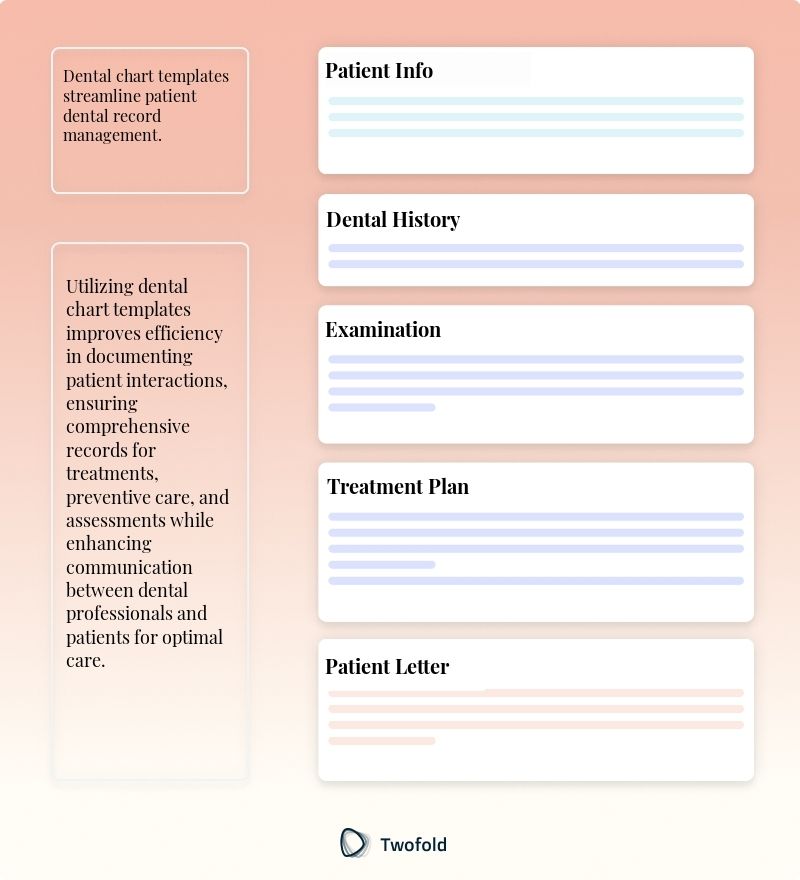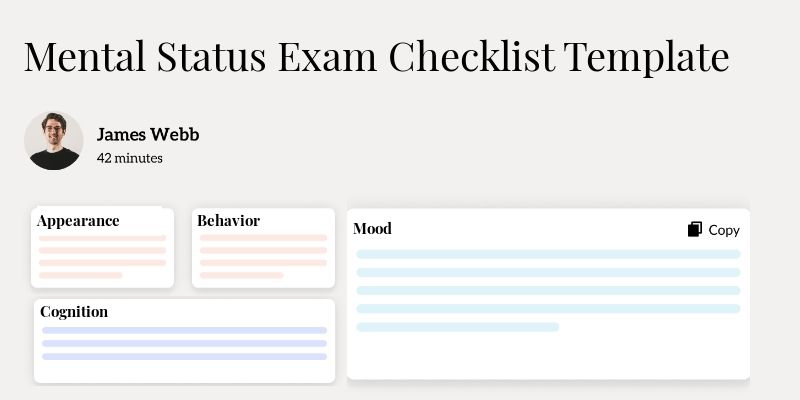
Dental Chart Template
Have you ever felt overwhelmed by the sheer complexity of documenting dental records? The struggle to maintain accuracy while juggling a myriad of patient details can be a common frustration. If you're nodding in agreement, you're in the right place. This blog post will unravel the mysteries of the Dental Chart Template—a tool designed to streamline your documentation process.
What Is a Dental Chart Template?
A Dental Chart Template is a blueprint for recording a patient's dental health status and treatment over time. It provides a structured format to capture specific details regarding oral examinations, procedures, and future care planning.
This template simplifies the procedure of documenting dental visits while ensuring thorough and consistent records. By using a standardized template, practitioners can enhance communication within their teams and with patients.
Key Components of a Dental Chart Template
These elements are crucial to a well‑rounded dental chart:
- Patient Identification Information
- Dental Health History
- Clinical Examination Notes
- Dental Procedure Documentation
- Diagnosis and Treatment Planning
- Progress Notes
- Patient Consent Records

How to Use a Dental Chart Template: Step-by-Step Process
Step 1: Collect Patient Information
Begin with accurate identification details including full name, date of birth, and contact information.
Step 2: Document Health History
Record the patient's dental and medical history to identify previous conditions that could affect treatment.
Step 3: Conduct and Record Clinical Examination
Use visual inspections and tools to gather comprehensive examination notes.
Step 4: Outline Treatment Plans
Create documented plans based on examination findings, considering short‑ and long‑term goals.
Step 5: Update with Progress Notes
Regularly update the chart with notes on ongoing treatments and patient feedback.
Benefits of a Dental Chart Template
Benefit | Explanation |
|---|---|
Consistency | Ensures uniform documentation standards across all patient records. |
Efficiency | Saves time with a predefined structure, reducing redundant tasks. |
Communication | Facilitates clear communication of patient care plans among dental team members. |
Legal Protection | Provides comprehensive documentation that can safeguard against legal issues. |
Stakeholders in Dental Chart Templates
Several key figures depend on accurate and thorough dental charts:
- Dentists: Use the chart to track patient progress and tailor treatment plans.
- Dental Hygienists: Record oral health assessments and assist dentists in decision-making.
- Patients: Receive transparent information about their dental health and treatment plans.
- Reception Staff: Schedule appointments and manage patient flows based on chart information.
Example of a Dental Chart Template PDF
Below is a glimpse into what a typical Dental Chart Template PDF might look like, with sections distinctly organized for ease of use.
Real-World Use Cases: Practical Impact of the Dental Chart Template
The Dental Chart Template offers significant advantages in various scenarios:
- In a busy urban dental clinic, efficient record-keeping ensures every patient receives personalized care, informed by their dental history.
- During a dental audit, consistent documentation highlights a clinic's commitment to regulatory standards.
- For a dental hygienist, clear records support educational efforts when explaining oral hygiene practices to patients.
Conclusion
The Dental Chart Template is essential for maintaining organized and efficient patient records. Its consistent format enhances communication across teams and offers legal safeguards through comprehensive documentation. By following best practices and using this template, dental professionals can improve the quality of care and streamline their workflow.
Disclaimer: This article is for informational purposes only and does not constitute legal or medical advice. Always consult professional guidelines and regulatory bodies for specific compliance requirements.

Dr. Danni Steimberg
Dr. Danni Steimberg is a pediatrician at Schneider Children’s Medical Center with extensive experience in patient care, medical education, and healthcare innovation. He earned his MD from Semmelweis University and has worked at Kaplan Medical Center and Sheba Medical Center.
A great dental chart lets any provider scan tooth status and plan in seconds. The QTS Stamp ‑ Quadrant, Tooth, Surface ‑ standardizes entries and links them to evidence and treatment so scheduling and billing are effortless.
- Lead with QTS: Start every line with quadrant, tooth number, and surface using universal numbering and surface abbreviations. Example: "UR 3 MOD" or "19 O". Consistency here makes charts instantly readable.
- Tie status to proof: Right after QTS, add a one-line status with clinical findings and evidence tags. Example: "Primary caries, cold sensitive, BW 07/22 shows proximal lesion; PD 3-4 mm on M." This anchors your reasoning to exam and imaging.
- Plan in code and time: Finish with the planned procedure, CDT code, expected chair time, and material or anesthesia notes. Example: "Plan D2392, resin, 30 min, local." This speeds pre-auth, scheduling, and handoffs.
Frequently Asked Questions
Reduce burnout,
improve patient care.
Join thousands of clinicians already using AI to become more efficient.

Food Pyramid Template
Discover practical Food Pyramid templates to enhance your documentation efficiency.

Mental Status Exam Checklist Template
Discover practical Mental Status Exam Checklist Template templates to enhance your documentation efficiency.

Case Notes Template
Discover practical Case Notes templates to enhance your documentation efficiency.

